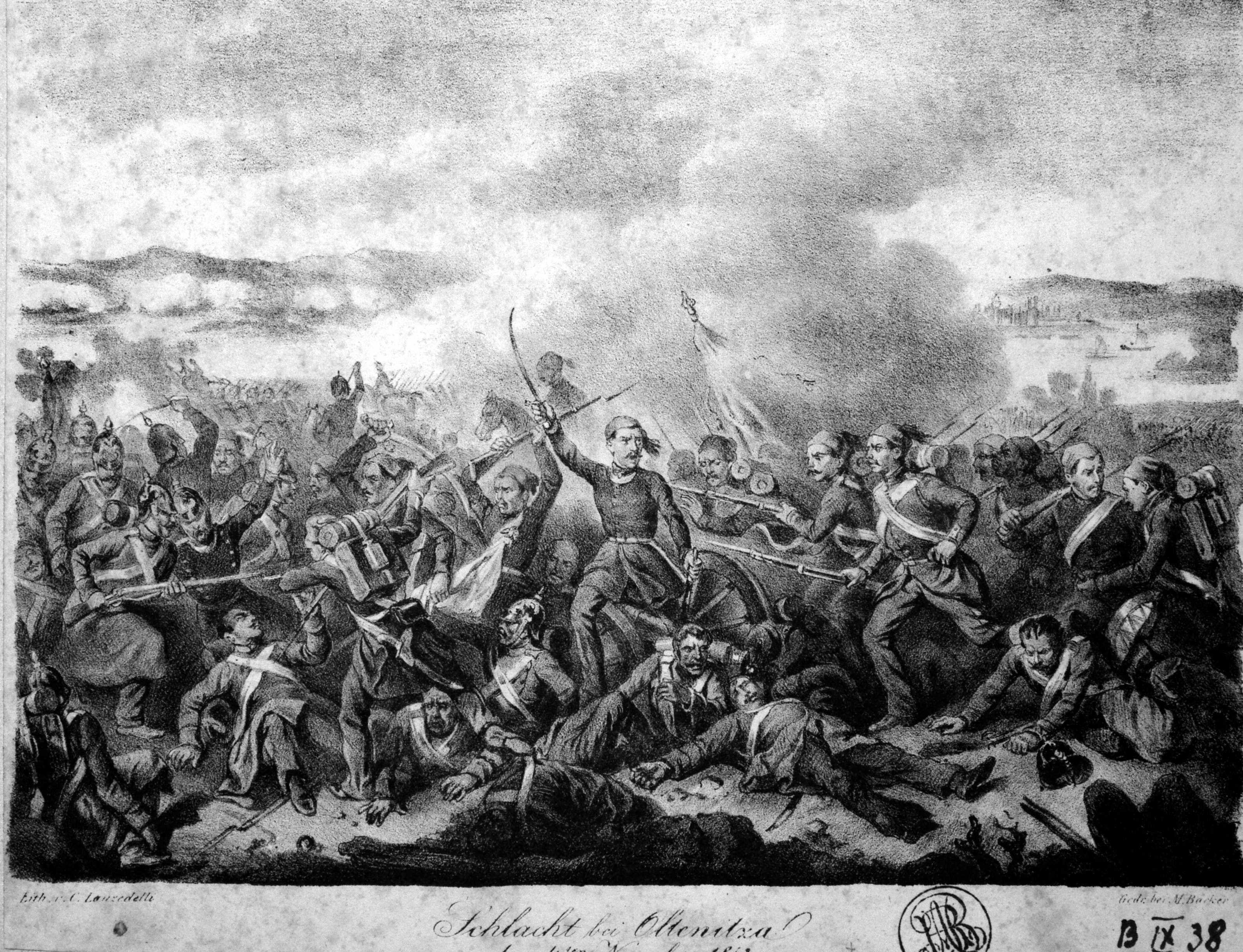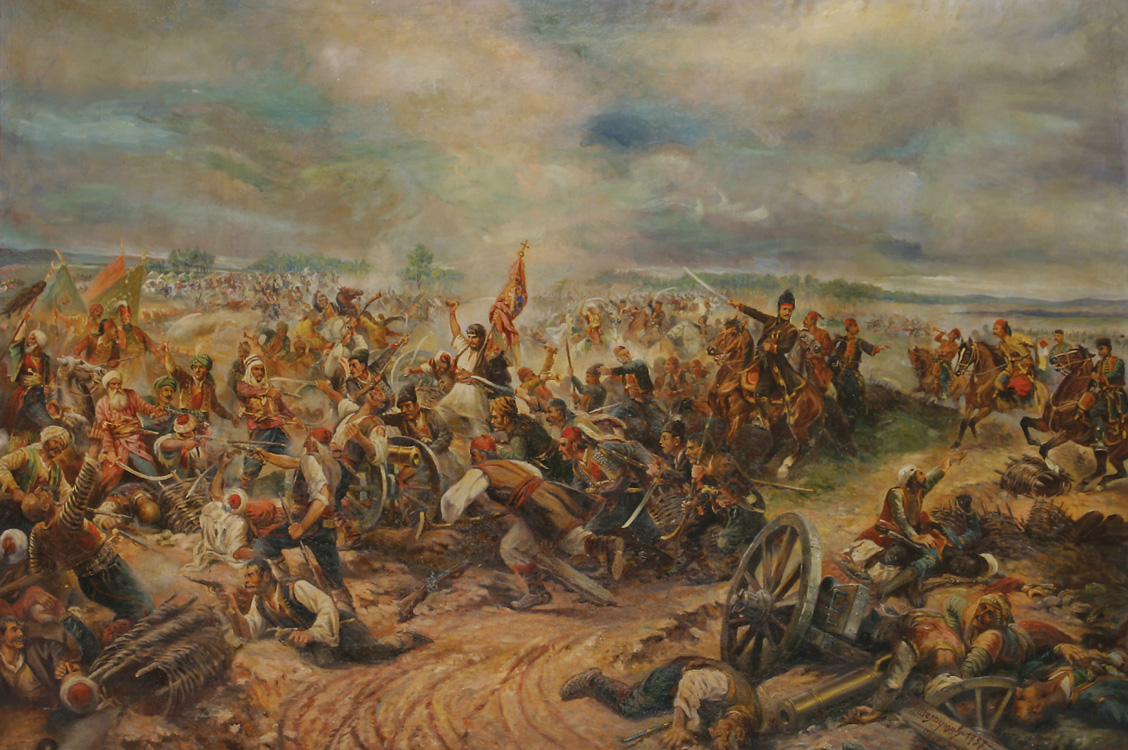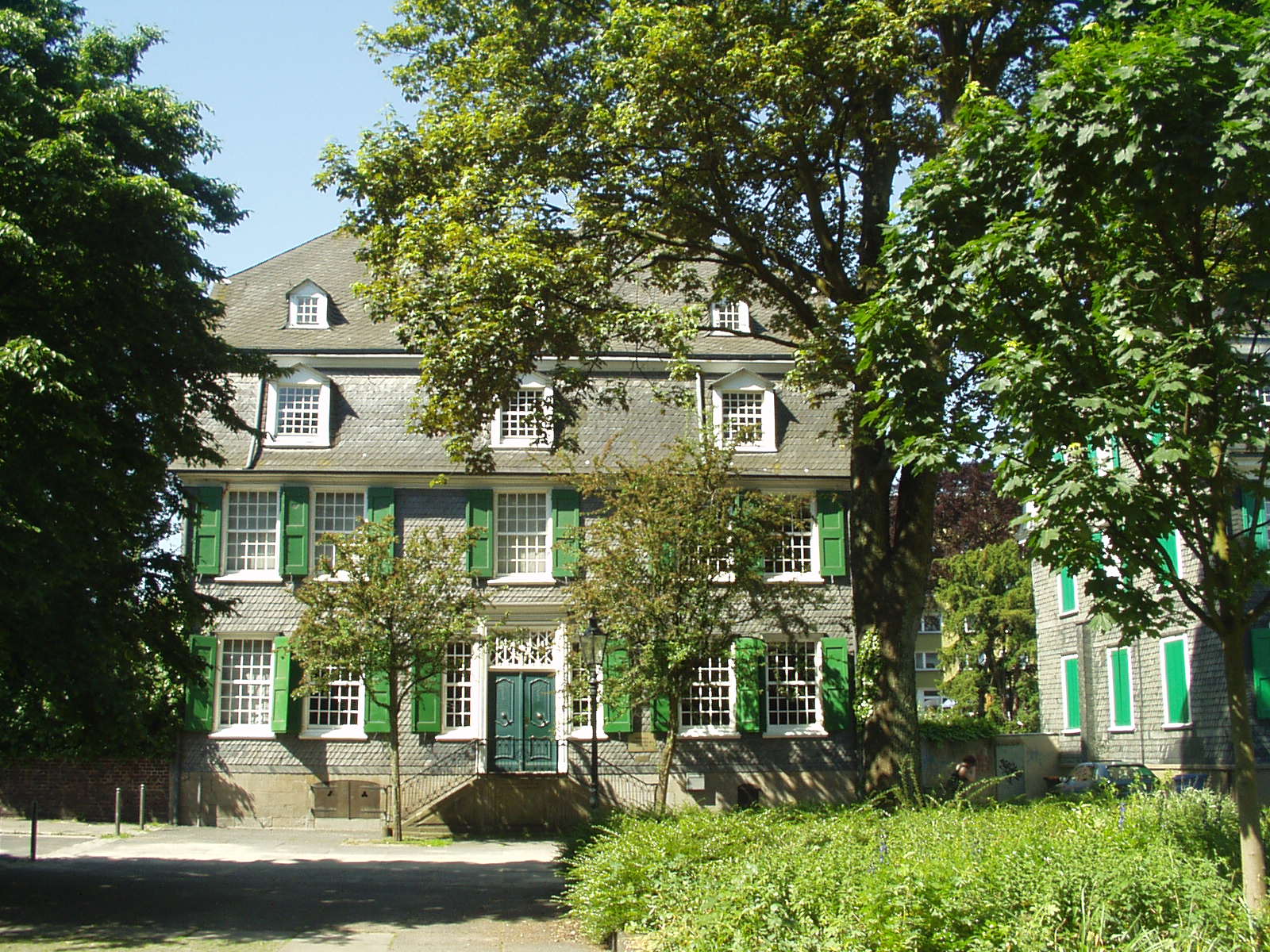|
Battle Of Oltenița
The Battle of Oltenița (or Oltenitza) was fought on 4 November 1853 and was the first engagement of the Crimean War. In this battle an Ottoman army under the command of Omar Pasha was defending its fortified positions from the Russian forces led by General Peter Dannenberg, until the Russians were ordered to withdraw.Engels, pp.516-522. The Russian attack was called off just when they reached the Ottoman fortifications, and they retreated in good order, but suffered heavy losses. The Ottomans held their positions, but did not pursue the enemy, and later retreated to the other side of Danube.Ann Pottinger Saab. The Origins of the Crimean Alliance, Volume 11. University of Virginia Press, 1977. P. 119 Background This battle took place during the Crimean War. In the build-up to war, Russia had occupied the Danubian Principalities of Moldavia and Wallachia, positioning troops on the (northern) left bank of the Danube, the border of Ottoman territory. The Ottoman Empire had respo ... [...More Info...] [...Related Items...] OR: [Wikipedia] [Google] [Baidu] |
Crimean War
The Crimean War, , was fought from October 1853 to February 1856 between Russia and an ultimately victorious alliance of the Ottoman Empire, France, the United Kingdom and Piedmont-Sardinia. Geopolitical causes of the war included the decline of the Ottoman Empire, the expansion of the Russian Empire in the preceding Russo-Turkish Wars, and the British and French preference to preserve the Ottoman Empire to maintain the balance of power in the Concert of Europe. The flashpoint was a disagreement over the rights of Christian minorities in Palestine, then part of the Ottoman Empire, with the French promoting the rights of Roman Catholics, and Russia promoting those of the Eastern Orthodox Church. The churches worked out their differences with the Ottomans and came to an agreement, but both the French Emperor Napoleon III and the Russian Tsar Nicholas I refused to back down. Nicholas issued an ultimatum that demanded the Orthodox subjects of the Ottoman Empire be placed ... [...More Info...] [...Related Items...] OR: [Wikipedia] [Google] [Baidu] |
Szathmary - The Oltenitza Quarantine 1854
Szathmary (or Szathmáry) is a Hungarian surname: * Elemér Szathmáry (1926–1971), Hungarian swimmer * Emőke Szathmáry (born 1944), Hungarian anthropologist, president of The University of Manitoba * Eörs Szathmáry (born 1959), Hungarian evolutionary biologist * Irving Szathmary (1907–1983), American arranger and composer best known for television themes, brother of William (Bill Dana) * Louis Szathmary (1919–1996), Hungarian-American chef, restaurateur and writer * William Szathmary (1924–2017), birth name of American comedian Bill Dana William Szathmary (October 5, 1924 June 15, 2017), known as Bill Dana, was an American comedian, actor, and screenwriter. He often appeared on television shows such as ''The Ed Sullivan Show'', frequently in the guise of a heavily accented Boli ..., brother of Irving * Zsigmond Szathmáry (born 1939), Hungarian organist, pianist, composer, and conductor See also * Szatmary {{DEFAULTSORT:Szathmary Hungarian-language surna ... [...More Info...] [...Related Items...] OR: [Wikipedia] [Google] [Baidu] |
Military History Of Romania
The military history of Romania deals with conflicts spreading over a period of about 2500 years across the territory of modern Romania, the Balkan Peninsula and Eastern Europe and the role of the Romanian military in conflicts and peacekeeping worldwide. During antiquity, the territory of modern Romania was the scene of sporadic wars between the native Dacian tribes and various invaders (Persians, Macedonians, Celts or Romans). Ultimately, the Dacian armies were defeated by the Roman Empire in 106 and a small part of its territory became a Roman province. As the Roman Empire declined, Dacia was abandoned because of pressure from the Free Dacians and Goths. For 1000 years, numerous migrating people including the Goths, Huns, Gepids, Avars, Slavs, Bulgars, Magyars, Cumans, Greeks, Romans, and Mongols overran the territory of modern Romania. During the Late Middle Ages, all three provinces had to deal with the danger posed by the growing power of the Ottoman Turks. John ... [...More Info...] [...Related Items...] OR: [Wikipedia] [Google] [Baidu] |
Battles Of The Crimean War
The Crimean War, , was fought from October 1853 to February 1856 between Russia and an ultimately victorious alliance of the Ottoman Empire, France, the United Kingdom and Piedmont-Sardinia. Geopolitical causes of the war included the decline of the Ottoman Empire, the expansion of the Russian Empire in the preceding Russo-Turkish Wars, and the British and French preference to preserve the Ottoman Empire to maintain the balance of power in the Concert of Europe. The flashpoint was a disagreement over the rights of Christian minorities in Palestine, then part of the Ottoman Empire, with the French promoting the rights of Roman Catholics, and Russia promoting those of the Eastern Orthodox Church. The churches worked out their differences with the Ottomans and came to an agreement, but both the French Emperor Napoleon III and the Russian Tsar Nicholas I refused to back down. Nicholas issued an ultimatum that demanded the Orthodox subjects of the Ottoman Empire be placed u ... [...More Info...] [...Related Items...] OR: [Wikipedia] [Google] [Baidu] |
Battles Involving The Ottoman Empire
List of the main battles in the history of the Ottoman Empire are shown below. The life span of the empire was more than six centuries, and the maximum territorial extent, at the zenith of its power in the second half of the 16th century, stretched from central Europe to the Persian Gulf and from the Caspian Sea to North Africa. The number of battles the empire fought is quite high. But here only the more important battles are listed. Among these, the battles fought in the 20th century (Turco-Italian War, Balkan Wars, and World War I ) as well as the sieges (like the sieges of Constantinople, Cairo, Belgrade, Bagdad, etc.) which most lists include as battles are not shown except in cases where the siege is followed by a battle (i.e. Vienna, Khotyn, Plevna).Prof.Dr.Yaşar Yücel-Prof.Dr.Ali Sevim: ''Türkiye Tarihi II, III, IV'', AKDTYK Yayınları, İstanbul, 1990, List of battles (Color legend for the location of the battle) The sultans of the Ottoman Empire participa ... [...More Info...] [...Related Items...] OR: [Wikipedia] [Google] [Baidu] |
Conflicts In 1853
Conflict may refer to: Arts, entertainment, and media Films * ''Conflict'' (1921 film), an American silent film directed by Stuart Paton * ''Conflict'' (1936 film), an American boxing film starring John Wayne * ''Conflict'' (1937 film), a Swedish drama film directed by Per-Axel Branner * ''Conflict'' (1938 film), a French drama film directed by Léonide Moguy * ''Conflict'' (1945 film), an American suspense film starring Humphrey Bogart * ''Catholics: A Fable'' (1973 film), or ''The Conflict'', a film starring Martin Sheen * ''Judith'' (1966 film) or ''Conflict'', a film starring Sophia Loren * ''Samar'' (1999 film) or ''Conflict'', a 1999 Indian film by Shyam Benegal Games * ''Conflict'' (series), a 2002–2008 series of war games for the PS2, Xbox, and PC * ''Conflict'' (video game), a 1989 Nintendo Entertainment System war game * '' Conflict: Middle East Political Simulator'', a 1990 strategy computer game Literature and periodicals * ''Conflict'' (novel) ... [...More Info...] [...Related Items...] OR: [Wikipedia] [Google] [Baidu] |
Longman
Longman, also known as Pearson Longman, is a publishing company founded in London, England, in 1724 and is owned by Pearson PLC. Since 1968, Longman has been used primarily as an imprint by Pearson's Schools business. The Longman brand is also used for the Longman Schools in China and the ''Longman Dictionary''. History Beginnings The Longman company was founded by Thomas Longman (1699 – 18 June 1755), the son of Ezekiel Longman (died 1708), a gentleman of Bristol. Thomas was apprenticed in 1716 to John Osborn, a London bookseller, and at the expiration of his apprenticeship married Osborn's daughter. In August 1724, he purchased the stock and household goods of William Taylor, the first publisher of ''Robinson Crusoe'', for 9s 6d. Taylor's two shops in Paternoster Row, London, were known respectively as the '' Black Swan'' and the ''Ship'', premises at that time having signs rather than numbers, and became the publishing house premises. Longman entered into part ... [...More Info...] [...Related Items...] OR: [Wikipedia] [Google] [Baidu] |
Godfrey Rhodes
Godfrey Rhodes (March 8, 1815 – September 8, 1897) was a royal advisor on the Privy Councils of State to Hawaiian monarchs Kamehameha V, Lunalilo, Kalākaua and Liliʻuokalani. He was both vice president and president of the legislative assemblies of the Kingdom of Hawaii. Background He was born in England and left home circa 1835 to work for the Hudson's Bay Company, based out of Fort Vancouver, at what is now Vancouver, Washington. Rhodes signed on with the packet boat ''Columbia'', later working on the schooner ''Unity''. His work took him up and down the north American coastline, as well as to the Hawaiian islands. He would later recall that indigenous peoples of the Pacific Northwest Coast liked to visit Hawaii, and in 1839 it became his job to transport them back to their point of origin. It was on that voyage where he also transported United States consular agent John Coffin Jones Jr. to Acapulco. Godfrey Rhodes and a partner named Bernard established a coffea plan ... [...More Info...] [...Related Items...] OR: [Wikipedia] [Google] [Baidu] |
Siege Of Silistra
The siege of Silistria, or siege of Silistra, took place during the Crimean War, from 11 May to 23 June 1854, when Russian forces besieged the Ottoman fortress of Silistria (present-day Bulgaria). Sustained Ottoman resistance had allowed French and British troops to build up a significant army in nearby Varna. Under additional pressure from Austria, the Russian command, which was about to launch a final assault on the fortress town, was ordered to lift the siege and retreat from the area, thus ending the Danubian phase of the Crimean War. Background On 20 March 1854, following the winter lull in campaigning, a Russian army consisting of two army corps crossed the Danube advancing into Ottoman territory. In the east, an army numbering 50,000 under General Alexander von Lüders crossed the border from Bessarabia into Dobruja to occupy designated strong points. The Russians advanced quickly and at the beginning of April reached the lines of the Trajan's Wall, 30 miles east of Sil ... [...More Info...] [...Related Items...] OR: [Wikipedia] [Google] [Baidu] |
Siege Of Calafat
The siege of Calafat took place in 1854 during the Crimean War. The Russians unsuccessfully besieged the Ottoman army at this place for four months before finally withdrawing. In July 1853, the Russian army invaded the Principality of Wallachia, which was an Ottoman vassal. Their army had some 91,000 men under the command of Prince Gorchakoff, with some 240 field artillery and 90 siege guns. In response, war was declared by the Ottomans and they assembled an army of some 60–70,000 under the command of Omar Pasha. The Ottomans had several fortified fortresses on the southern side of the Danube river, of which Vidin was one. The Turks made several plans to advance into Wallachia. On 28 October their army in Vidin crossed the Danube and established itself at the village of Calafat, and started building fortifications. Another army crossed the Danube at Ruse on 1-2 November in a feint attack to lure the Russians away from Calafat. This operation was unsuccessful and they retreated ... [...More Info...] [...Related Items...] OR: [Wikipedia] [Google] [Baidu] |
Battle Of Cetate
The Battle of Cetate was fought during the Crimean War. In this battle a large Ottoman force under Ahmed Pasha unsuccessfully attempted to capture the village of Cetate which was controlled by Russian Colonel . Background The battle took place during the Danube campaign of the Crimean War. In the build-up to the war, Russia occupied the Danubian Principalities of Moldavia and Wallachia, positioning troops on the left (northern) bank of the Danube, which formed the border with Ottoman territory. The Ottoman Empire had responded by moving troops to the right bank to face them. In the west, on the border with Austria and Serbia, Russian troops in Cetate were faced by Ottoman forces in the fortress of Vidin. Following the Ottoman ultimatum on 4 October 1853 to withdraw within 2 weeks, Ottoman forces under Ahmed Pasha crossed the river and occupied the town of Calafat, which they fortified as a bridgehead. Battle On 31 December 1853 Ahmed Pasha and a force of several thousand cav ... [...More Info...] [...Related Items...] OR: [Wikipedia] [Google] [Baidu] |



